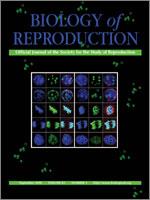Our group and others have found that the treatment of embryos with trichostatin A (TSA) after cloning by somatic cell nuclear transfer (SCNT) results in a significant improvement in efficiency. We believe that TSA treatment improves nuclear remodeling via histone modifications, which are important in the epigenetic regulation of gene silencing and expression. Some studies found that treatment of SCNT-generated embryos with TSA improved lysine acetylation of core histones in a manner similar to that seen in normally fertilized embryos. However, how histone methylation is modified in TSA-treated cloned embryos is not completely understood. In the present study, we found that TSA treatment caused an increase in chromosome decondensation and nuclear volume in SCNT-generated embryos similar to that in embryos produced by intracytoplasmic sperm injection. Histone acetylation increased in parallel with chromosome decondensation. This was associated with a more effective formation of DNA replication complexes in treated embryos. We also found a differential effect of TSA on the methylation of histone H3 at positions K4 and K9 in SCNT-generated embryos that could contribute to genomic reprogramming of the somatic cell nuclei. In addition, using 5-bromouridine 5′-triphosphate-labeled RNA, we showed that TSA enhanced the levels of newly synthesized RNA in 2-cell embryos. Interestingly, the amount of SCNT-generated embryos showing asymmetric expression of nascent RNA was reduced significantly in the TSA-treated group compared with the nontreated group at the 2-cell stage. We conclude that the incomplete and inaccurate genomic reprogramming of SCNT-generated embryos was improved by TSA treatment. This could enhance the reprogramming of somatic nuclei in terms of chromatin remodeling, histone modifications, DNA replication, and transcriptional activity.
How to translate text using browser tools
26 May 2010
Effect of Trichostatin A on Chromatin Remodeling, Histone Modifications, DNA Replication, and Transcriptional Activity in Cloned Mouse Embryos
Hong-Thuy Bui,
Sayaka Wakayama,
Satoshi Kishigami,
Keun-Kyu Park,
Jin-Hoi Kim,
Nguyen Van Thuan,
Teruhiko Wakayama
ACCESS THE FULL ARTICLE

Biology of Reproduction
Vol. 83 • No. 3
September 2010
Vol. 83 • No. 3
September 2010
assisted reproductive technology
cloned embryos
developmental biology
early development
histone modification




